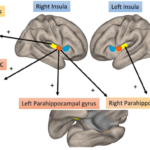Of note, because pain is subjective, it can be affected by gender-related factors, such as gender roles.“There are differences in the way society expects boys and girls to respond to or report pain,” said Dr. Eder. Boys are expected to endure pain and be strong, so they may minimize pain reporting later. For women, it may not be perceived as weakness to report pain, so they’re more likely to report it early and see their physicians.”
Practical Applications of Knowledge
The data show that sex differences exist. So how can we adjust practice patterns to take these into account? Dr. Eder suggested:
- Closer monitoring of female patients because there’s data to show lower treatment efficacy with biologic therapies in women;
- More frequent use of sensitive imaging modalities, such as ultrasound or MRI, in women to detect active inflammation because they have a higher burden of pain and dysfunction;
- Asking men direct questions to assess symptom burden because they may downplay symptoms; and
- Managing pain regardless of the cause.
Future Directions
Last but not least, Dr. Eder urged, “People who do research need to report sex disaggregated data. Even if the study is underpowered to report sex differences, it can help later in meta-analyses.”

Samantha C. Shapiro, MD
Samantha C. Shapiro, MD, is a clinician educator who is passionate about the care and education of rheumatology patients. She writes for both medical and lay audiences and practices telerheumatology.
References
- Tarannum S, Widdifield J, Wu CF, et al. Understanding sex-related differences in healthcare utilisation among patients with inflammatory arthritis: A population-based study. Ann Rheum Dis. 2022 Feb;82(2):283–291.
- Theander E, Husmark T, Alenius GM, et al. Early psoriatic arthritis: Short symptom duration, male gender and preserved physical functioning at presentation predict favourable outcome at 5-year follow-up. Results from the Swedish Early Psoriatic Arthritis Register (SwePsA). Ann Rheum Dis. 2014;73(2):407–413.
- Coates LC, van der Horst-Bruinsma IE, Lubrano E, et al. Sex-specific differences in patients with psoriatic arthritis: A systematic review. J Rheumatol. 2023 Apr;50(4):488–496.
- Orbai AM, Perin J, Gorlier C, et al. Determinants of patient-reported psoriatic arthritis impact of disease: An analysis of the association with sex in 458 patients from fourteen countries. Arthritis Care Res (Hoboken). 2020 Dec;72(12):1772–1779.
- Egholm CL, Krogh NS, Pincus T, et al. Discordance of global assessments by patient and physician is higher in female than in male patients regardless of the physician’s sex: Data on patients with rheumatoid arthritis, axial spondyloarthritis, and psoriatic arthritis from the DANBIO registry. J Rheumatol. 2015 Oct;42(10):1781–1785.
- Coates LC, Robinson DE, Orbai AM, et al. What influences patients’ opinion of remission and low disease activity in psoriatic arthritis? Principal component analysis of an international study. Rheumatology (Oxford). 2021 Nov 3;60(11):5292–5299.
- Scriffignano S, Perrotta FM, Fatica M, et al. Patient acceptable symptoms state in psoriatic arthritis: does it differ between sexes? (AB1131). Ann Rheum Dis. 2023;82:1796.
- Eder L, Mylvaganam S, Pardo J, et al. Sex-related differences in patient characteristics, and efficacy and safety of advanced therapies in randomised clinical trials in psoriatic arthritis: A systematic literature review and meta-analysis. Lancet Rheumatol. 2023 Dec;5(12):e716–e727.
- Eder L, Richette P, Coates LC, et al. Gender differences in perceptions of psoriatic arthritis disease impact, management, and physician interactions: Results from a global patient survey. Rheumatol Ther. 2024 Oct;11(5):1115–1134.
- Dance A. Why the sexes don’t feel pain the same way. Nature. 2019 Mar;567(7749):448–450.
- Tarannum S, Leung YY, Johnson SR, et al. Sex- and gender-related differences in psoriatic arthritis. Nat Rev Rheumatol. 2022 Sep;18(9):513–526.


